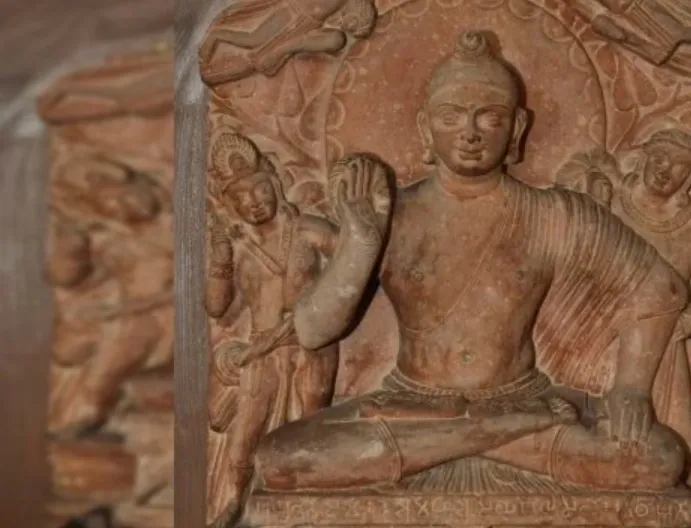- Courses
- GS Full Course 1 Year
- GS Full Course 2 Year
- GS Full Course 3 Year
- GS Full Course Till Selection
- Answer Alpha: Mains 2025 Mentorship
- MEP (Mains Enrichment Programme) Data, Facts
- Essay Target – 150+ Marks
- Online Program
- GS Recorded Course
- Polity
- Geography
- Economy
- Ancient, Medieval and Art & Culture AMAC
- Modern India, Post Independence & World History
- Environment
- Governance
- Science & Technology
- International Relations and Internal Security
- Disaster Management
- Ethics
- NCERT Current Affairs
- Indian Society and Social Issue
- NCERT- Science and Technology
- NCERT - Geography
- NCERT - Ancient History
- NCERT- World History
- NCERT Modern History
- CSAT
- 5 LAYERED ARJUNA Mentorship
- Public Administration Optional
- ABOUT US
- OUR TOPPERS
- TEST SERIES
- FREE STUDY MATERIAL
- VIDEOS
- CONTACT US
Abhaya Mudra: Symbol of Fearlessness in Buddhist and Hindu Traditions
Abhaya Mudra: Symbol of Fearlessness in Buddhist and Hindu Traditions
05-07-2024

In his inaugural address as the Leader of the Opposition in Lok Sabha, Rahul Gandhi mentioned the abhaya mudra, a hand gesture symbolizing reassurance and freedom from fear, depicted by Lord Shiva, Guru Nanak, Jesus Christ, and figures in Islam, Buddhism, and Jainism.
What is Abhaya Mudra:
- Abhaya Mudra: A gesture with an elevated, open palm that symbolizes reassurance and liberation from fear.
- Mudras are a non-verbal method of communication and self-expression, composed of hand gestures and finger positions.
- These symbolic sign-based finger patterns serve as a substitute for spoken words but retain their efficacy. They are used to evoke ideas in the mind that represent divine powers or deities themselves.
- The formation of a mudra is based on specific finger movements. In essence, they constitute a highly stylized form of gestural communication.
Mudras in Buddhism:
- Definition: Non-verbal mode of communication and self-expression, consisting of hand gestures and finger postures.
- Symbolic sign-based finger patterns that replace spoken words and evoke ideas symbolizing divine powers or deities.
- Composition: Specific finger movements, highly stylized form of gestural communication.
Five Primary Mudras in Buddhism :
- Abhaya Mudra: Symbolizes peace and friendship, associated with Amoghasiddhi.
- Dharmachakra Mudra: Symbolizes the Wheel of Dharma, associated with Vairochana.
- Bhumisparsha Mudra: Symbolizes the moment of enlightenment, associated with Akshobhya.
- Varada Mudra: Known as the boon-granting mudra, associated with Ratnasambhava.
- Dhyana Mudra: Denotes a state of meditation, associated with Amitabha.
Abhaya Mudra in Hindu Religion:
- Appeared in depictions of Hindu deities, including Lord Shiva, Lord Vishnu, and Lord Ganesha.
- Symbolizes protection, reassurance, and fearlessness.
Importance and Significance:
- Powerful symbol of reassurance and fearlessness, conveying a sense of security and protection.
- Call to action, urging people to confront their fears and stand up against the culture of fear and oppression.
- Reminder of the importance of promoting a culture of courage, compassion, and fearlessness in Indian society.
- Historical significance: Depicted in various forms of Buddhist art and architecture, used in Buddhist rituals and practices.
- Cultural significance: Symbol of India's cultural and religious diversity, highlighting the importance of interfaith dialogue and understanding.
Must Check: Best IAS Coaching In Delhi



